Description and cultivation of violets "Chanson"
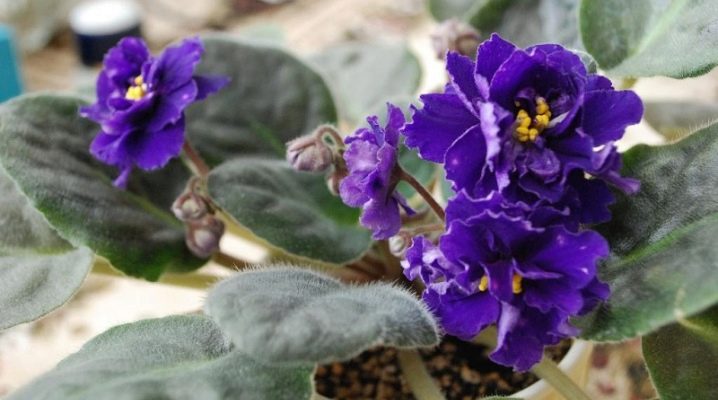
Houseplants have been indispensable human companions for many years. Green spaces can be found not only in residential premises, but also in educational and health care institutions, as well as in offices. Flowers not only complement and decorate all types of interiors, but also purify the air and improve the overall atmosphere of the room. For many years, one of the most beloved plants in this category is the violet. Breeders from around the world have bred a huge number of varieties that differ in color and properties. Among the wide assortment of colors, florists single out one of the most unusual - the violet "Chanson". This plant will be able to please its owners with a beautiful appearance and bright colors only with proper care.
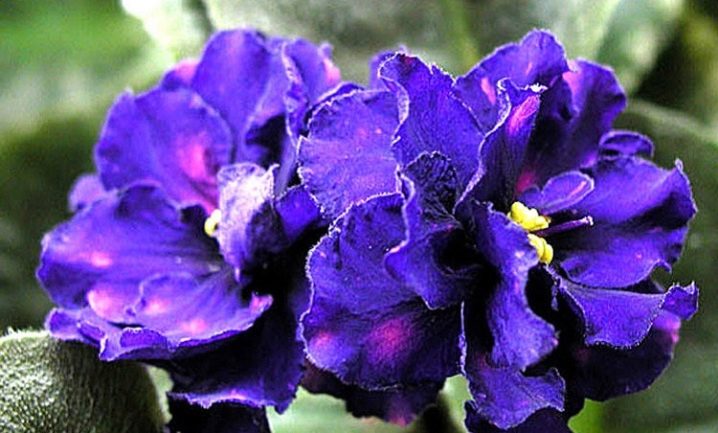
Description
The Chanson Violet - Saintpaulia, which was bred by a group of breeders led by Paul Soran, has an unusual and fancy color, as well as a classic size.
Purple velvety inflorescences have large leaves, the size of which can reach 7 cm. The wavy petals are covered with light peas in different shades of pink. The main feature of young plants is the absence of pink drops on the surface of the petals. Each rosette consists of more than 5 inflorescences. The diameter of one rosette is 21 cm. The period of abundant flowering lasts about three months.
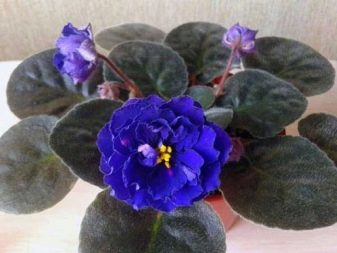
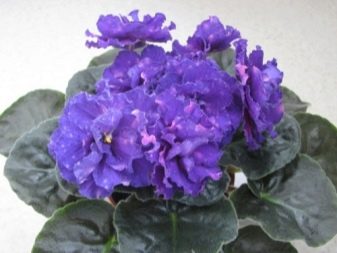
The color of the leaves is dark green with olive tint, and the shape is rounded. Each leaf is attached to a long stem. The outer edges of the sheet plate are lowered down.
For rapid growth and abundant flowering, it is necessary to create comfortable conditions.
The plant has a negative attitude to direct sunlight, and in the winter time it needs additional artificial lighting.
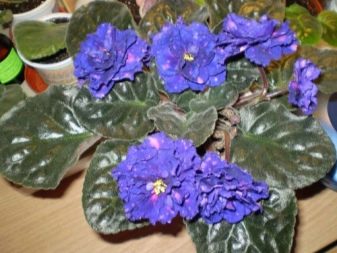
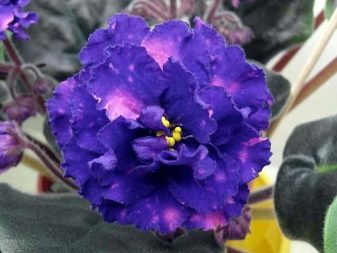
Subtleties of care
Novice gardeners should pay attention to this type of violets, which is unpretentious and needs minimal care.
The soil mixture for planting should consist of 3 parts of peat, 5 parts of deciduous soil and 1 part of sand. Experienced gardeners recommend adding a little charcoal or moss to the nutrient, as well as particles of expanded clay and vermiculite. Experts recommend using ready-made potting mixes sold in specialized stores. The main condition for planting a plant in a pot is the presence of a drainage layer.
The violet has a shallow root system that feels comfortable in low pots. For planting young plants, preference should be given to pots, the diameter of which does not exceed 8 cm. Every three years, as the flower grows, it must be transplanted into larger containers.
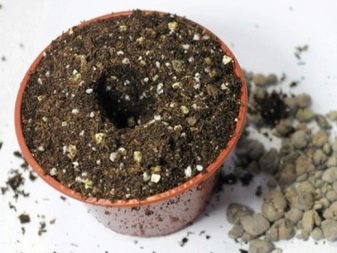

The transplant must be carried out very carefully, keeping the earthen lump intact. It is not recommended to change the pot during the flowering period or the formation of peduncles.
In specialized stores, you can buy two types of pots:
- plastic;
- ceramic.
Both types of flower pots can be used to grow violets, but experts recommend choosing ceramic pots.
A good level of illumination is the key to abundant flowering. After contact of violets with direct sunlight, burns and white spots may remain - violets must be grown on window sills on the west or east side of the apartment. To get even light on all sides of the plant, you need to turn the pot once a week.
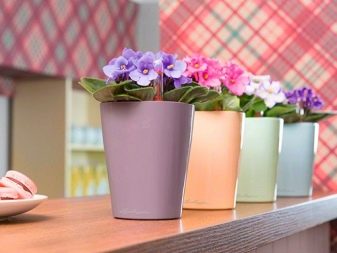
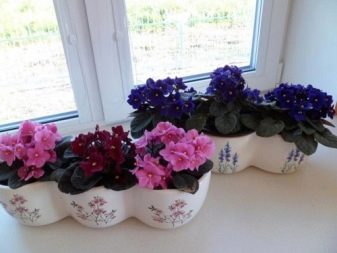
During the short daylight hours, violets need additional lighting for active growth and flowering.
The most comfortable temperature range is 20 to 25 degrees. In winter, the air temperature should not be lower than 19 degrees.
When ventilating the room, it is necessary to protect the flower from drafts and strong air flow.
The humidity level in the room with plants should not be lower than 50 percent.
Biologists categorically forbid spraying a flower.
To increase humidity, it is better to put a vase of water next to the plant or pour drainage into the pan and constantly moisten it.
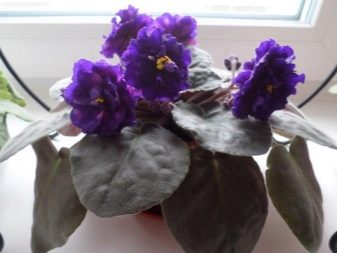
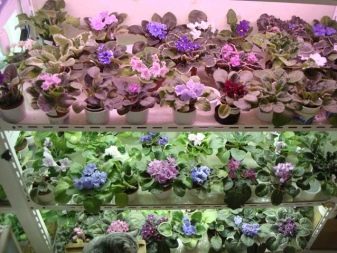
For watering, you must use a watering can with a thin spout, which will exclude the ingress of water on the stems and leaves of the plant. If it is impossible to exclude the ingress of water on the leaves, you must immediately dry the plant and blot the drops of moisture. If you moisten the soil through the pan, then after a few minutes, be sure to drain all the remaining liquid. Water droplets on leaves and damp earth can provoke putrefactive processes. In case of a long absence, you can organize automatic watering, for which you need to lower one end of the rope into a container with water, and put the other end in a pot.
Experienced gardeners recommend moistening the soil only after it has completely dried out with settled water at room temperature.
In the summer, you need to wash off the dust from the leaves with a shower every month. It is strictly forbidden to use cold water and strong water pressure.
For the full growth and development of the plant, it is necessary to regularly use a complex of special fertilizers, which must be dissolved in water before use in accordance with the recommendations of the manufacturers.
During the flowering period, fertilizers containing phosphorus and potassium should be used, and during the formation of the rosette, the plant needs nitrogen fertilizers.
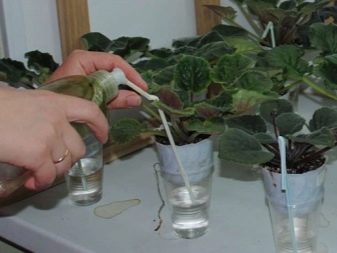
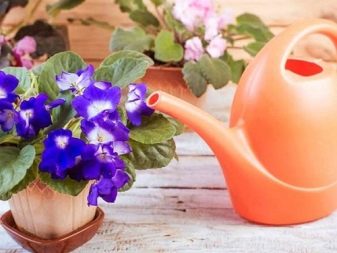
Reproduction
To get new plants of Saintpaulia several breeding methods can be used:
- seeds;
- pinching;
- planting peduncles;
- rooting cuttings.
The most common and effective way to grow a new plant is by rooting stepchildren. The technology of this method is to separate the little stepsons from the mother bush and carefully transplant them into a new flower container.
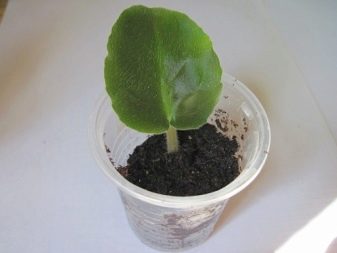
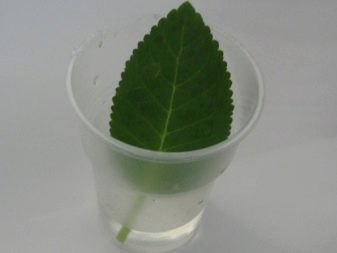
To propagate violets using peduncles or cuttings, you must first place the planting material in a container with water or in wet soil. Special growth stimulants will help speed up the formation of the root system. Only after the appearance of roots about 1 cm long can they be planted in a permanent place of growth.
Getting a new plant from seeds is a complex and lengthy process that is used in special nurseries by experienced botanists. For self-cultivation of violets using seeds, you need to purchase only ready-made seed.
Seeds collected on their own do not carry the genetic characteristics of the given plant and cause the sport of the plant.
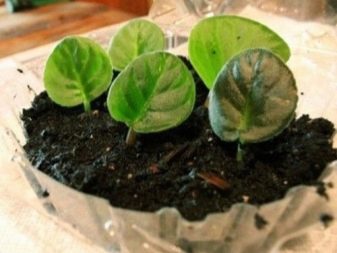
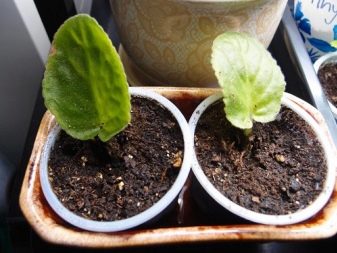
Dangerous diseases
Violet is a delicate flower that has low resistance to viral, fungal and infectious diseases. These problems appear on weak plants, the care of which does not comply with the established rules.
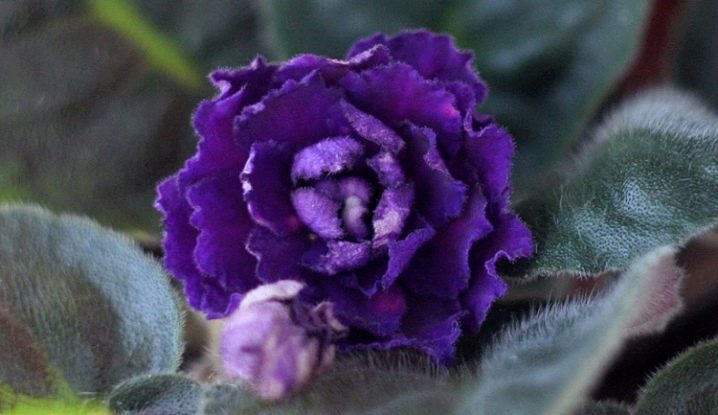
High humidity and low ambient temperatures can lead to a number of diseases.
- Bacteriosis - a disease that can occur during the warm season. Signs are the presence of dark spots, darkening of the underside of the foliage, wilting of flowers and a change in the structure of the leaf plate. Ways of struggle - the destruction of the plant.
- Powdery mildew - a fungal disease that can lead to the death of the plant. Signs - the presence of white bloom on the surface of the leaves, which provokes the appearance of ulcers and roughness of the leaves. The causes are contamination from soil, garden tools and diseased plants.Treatment - removal of infected leaves, treatment of the plant with special fungicides.
- Rust - a dangerous type of fungal disease that must be treated at the first signs of its appearance. Signs - the presence of brown spots on the surface of the leaf and yellow capsules with spores on the underside. The reasons are low light levels, weak immunity, plant infection. Treatment - removal of diseased leaf plates, isolation of the plant, treatment of the bush with fungicides.
- Root rot - a disease of the root system that prevents the formation of flowers. Signs - long absence of peduncles, lethargy of leaves and petioles. The reasons are the lack of a drainage layer, poor quality of the soil mixture, excessive watering, low soil temperature. Treatment - removing damaged parts or completely destroying the plant, treating it with a fungicide and changing the pot and soil.
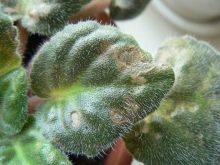
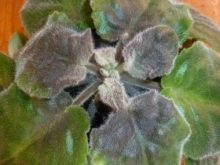
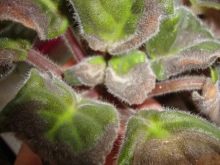
When the first signs of the disease appear, a set of measures must be taken:
- removal of damaged parts of the plant;
- flower treatment with special chemicals;
- replacement of nutrient soil and flower pot.
It is strictly forbidden to feed the plant earlier than 30 days after its recovery. A weakened flower is not able to assimilate nutrients, the excess of which can provoke the death of the plant.
The following pests can harm the plant:
- spider mite;
- cyclamen tick;
- nematode;
- aphid;
- scabbards;
- mushroom mosquitoes.

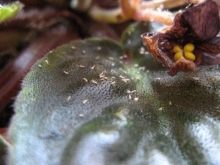

When pests appear, the plant must be treated with special insecticides.
Novice growers may face a number of other problems:
- wilting and drying of leaves;
- staining;
- rotting of the root system.
Causes of yellow and brown spots:
- sunburn;
- low or high air humidity;
- unbalanced watering with cold water;
- excessive application of nitrogenous fertilizers.
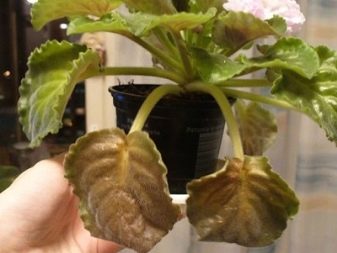
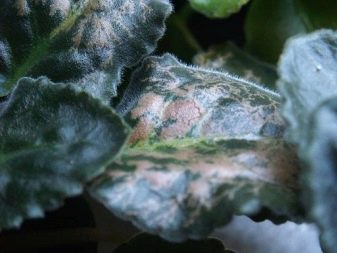
Reasons for drying and wilting of leaves:
- abundant watering;
- lack of nutrients;
- the presence of drafts;
- poor quality of soil.
Causes of decay of the root system:
- abundant watering;
- high acidity of the soil.
Violet "Chanson" is a decorative flower that can decorate any room. Before buying this plant, you must carefully study all the subtleties and rules for caring for it. Only the creation of comfortable conditions will lead to the full growth and development of the plant, which will delight all family members with beautiful and bright flowers.
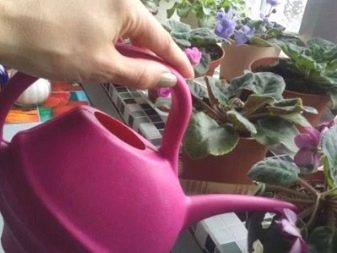
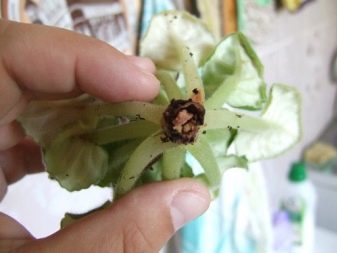
For information on how to properly water a violet, see the video below.































The comment was sent successfully.